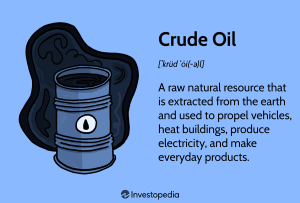Crude oil, a vital component in the global energy market, varies significantly in quality and properties. These variations define the suitability of crude oil for different industrial applications. Understanding these grades is crucial for refineries and businesses involved in the oil industry.
Types of Crude Oil
Light vs. Heavy Crude Oil
- Light Crude Oil: Characterized by low density and low viscosity. It is easier to refine and primarily yields high-value products like gasoline, diesel, and jet fuel. For example, West Texas Intermediate (WTI) with a specific gravity of around 0.827 and a sulfur content of 0.24% is a prime example of light crude oil.
- Heavy Crude Oil: Has a higher density and viscosity, making it harder to refine. It requires more sophisticated refining processes to produce desirable products. Venezuelan Heavy, with a specific gravity exceeding 0.930 and sulfur content above 2.4%, falls into this category.
Sweet vs. Sour Crude Oil
- Sweet Crude Oil: Contains less sulfur, below 0.5% by weight, making it less corrosive and more desirable for refining. WTI and Brent Crude are well-known sweet crude oils.
- Sour Crude Oil: Contains higher levels of sulfur, above 0.5%, necessitating more complex refining processes to remove sulfur impurities. Sour crude oils include the Dubai Crude and the Mexican Maya.
Industrial Applications
Transportation Fuels
The most significant use of Crude Oil is in the production of transportation fuels. Light and sweet crude oils are highly sought after for this application due to their higher yields of gasoline, diesel, and aviation fuel. The refining process of light crude oil can achieve efficiency rates up to 90%, significantly reducing costs and enhancing profitability for refineries.
- Gasoline Production: Requires light, sweet crude oil for cost-effective refining, given the lower sulfur content and lesser refining complexity. The average cost of refining a barrel of light crude oil into gasoline can range between $5 and $10, depending on the refinery's technology and location.
- Diesel and Jet Fuel: Also benefit from light, sweet crude oil, with refineries achieving higher yields. The production cost, efficiency, and quality of these fuels are directly influenced by the crude oil's characteristics.

Industrial Chemicals and Plastics
Heavy and sour crude oils find their application in the production of industrial chemicals and plastics. Despite their lower grade, advancements in refining technologies have made it possible to break down these crudes into valuable components.
- Sulfur Recovery: Sour crude oils are a significant source of sulfur, a critical ingredient in making fertilizers and sulfuric acid. The process involves complex refining and treatment operations, with sulfur recovery rates exceeding 95% in modern facilities.
- Base Chemicals for Plastics: Heavy crude oils are processed to produce base chemicals like ethylene and propylene, foundational materials for making plastics. The efficiency of converting heavy crude into these chemicals can vary widely, with state-of-the-art refineries achieving higher conversion rates, thus impacting the cost and quality of the end products.
Economic and Environmental Considerations
The choice of crude oil grade has profound implications on both economics and environmental impact. Light and sweet crude oils, while more expensive per barrel, offer higher yields of valuable products and require less energy-intensive refining processes, leading to lower greenhouse gas emissions.
- Refining Costs: The complexity of refining heavy and sour crude oils translates into higher operational costs, with estimates suggesting that refining heavy sour crude can be 10-20% more expensive than processing light sweet crude.
- Environmental Impact: Processing heavy and sour crudes also results in higher carbon dioxide emissions. A study showed that for every barrel of heavy sour crude refined, CO2 emissions could be 10-15% higher than emissions from refining a barrel of light sweet crude.
Conclusion
The quality and characteristics of crude oil play pivotal roles in determining its suitability for various industrial applications. From transportation fuels to plastics, the grade of crude oil influences the efficiency, cost, and environmental footprint of its refining process. As the oil industry continues to evolve, understanding these nuances becomes increasingly important for businesses and policymakers alike, driving innovations in refining technology and sustainability practices.
